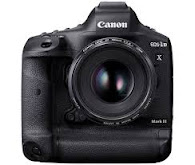Firmware Version 1.2.0 for the EOS-1D X Mark III incorporates the following enhancements and fixes:
1. Enhancements when using Browser Remote:
- The image list displayed will be refreshed automatically on the browser.
- On the shooting screen of the browser, you can set the movie resolution and a high frame rate.
- On the shooting screen of the browser, you can change the movie shooting mode.
- On the shooting screen of the browser, Live View will be displayed as soon as you select the movie shooting button.
2. Enhances Auto Focus (AF) for improved face and eye recognition at greater distances.
3. Fixes a phenomenon that may occur during viewfinder shooting, in which the shutter may not be released or the camera may not operate in the following settings:
- In One-Shot AF mode, when the AF Area Selection Mode is set as Zone AF, Large Zone AF or Automatic Selection AF.
- In AI Servo AF, when direct AF point selection is made using the smart controller.
- When the Register/Recall Shooting Function is assigned to the AE Lock button, in the Custom Controls.
4. Connectivity during FTP transmission, has been improved.
5. Improves Wi-Fi connectivity when using the Wireless File Transmitter WFT-E9.
6. Fixes a phenomenon, in which the card access time may take longer, when using certain CFexpress cards.
The firmware can be downloaded from:
Canon is already working on further future updates in response to feedback about the EOS-1D X Mark III and plans to introduce the following video recording functions via a series of future firmware updates:
- Canon Log 3 option
- Lower bit rate option for 5.5K RAW video recording
- Lower bit rate option for all the IPB video recording modes
